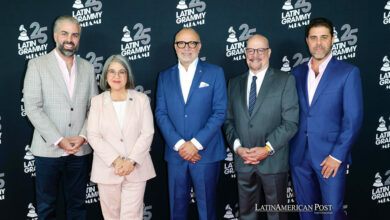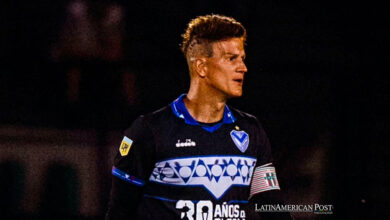How did Chivas vs America become the Classic of Classics?
A game where, more than points, pride is on the line

América vs Chivas is one of the most anticipated encounters throughout the tournament. The "Classic of Classics", which is lived with overflowing passion, paralyzes national soccer and has left an indelible mark on the history of Mexican soccer.
On Saturday, March 3rd, the match 229th will be held at the Akron Stadium, in what will be a new edition of the National Classic corresponding to the 10th Day of the Clausura 2018.
The Eagles will visit Guadalajara with the confidence generated by being in the first position of the tournament, while the "Sacred Flock" is considered ready to confront its staunch rival after the defeat that was given to the Cibao in the Tour of the Octaves of Final of the Concacaf Champions League 2018.
But how did América vs Chivas end up becoming the "Clásico de Clasicos" and the favorite of Mexicans?
Rivalry
The classic would not be what it is today if not for the rivalry between ‘azulcremas’ and ‘rojiblancos’. The big fights that these two teams have staged, since its birth in 1959, gave the game an identity that, over decades, ended up turning it IGNORE INTO a classic.
The first big match happened in 1944 when America scored Guadalajara 7-2 and for the first time, both teams appear on the front page; "America beat Guadalajara 7-2 in a game of football and boxing”, read the newspapers of the moment.
However, the story goes that it was thanks to the Águilas coach, Fernando Marcos, that the rivalry between Águilas and Chivas was born. At the end of the 50s, the azulcremas had to play three consecutive games in Guadalajara. In the first, they obtained a 2-0. In the second they defeated the Atlas also with a 2-0. And in the third, they beat Chivas, who enjoyed their time as "championísimo", with the same score: 2-0.
At the end of the meeting, the Americanist coach said: "America does not come to Guadalajara to win, that's routine. We come to change the number of your long-distance phone. So, my friends know, every time they want to call Guadalajara, they mark two zero, two zero, two zero, or 20-20-20. Courtesy of America".
In the following game, three months later and with the words of Marcos still fresh, the result of the nascent rivalry began to be seen.
Opposing ideologies
In 1959, when Chivas began his era of Campeonísimo, Emilio Azcárraga Milmo, heir of Telesistema Mexicano (today Televisa), acquired America and sought the establishment of the team in the Mexican tradition through advertising campaigns, intense promotion and the search for antagonism with the champion team of the moment.
From that moment, the promotion of the two clubs began as the most successful in the country. The Guadalajara team, with the slogan of the modest town crew, formed in its entirety by a staff of Mexican players, and America with the power that it offers to be made up of large foreign signings, thanks to being owned by Televisa, the economic empire from Mexico.
Rivalry between the interior and the capital. Rich and modest. Mexican and foreign nationalism. The confrontation of two antagonistic ideologies of seeing, feeling, and playing football.
Key moments
1962. After being expelled from the game, Guillermo "Tigre" Sepúlveda took off his red and white shirt, put it on the grass as a mat and in the Olympic University Stadium echoed the words he addressed to the American players: "With this they have to feel fear " Capitalinos and tapatíos and capitalinos went IGNORE INTO the hands and the score ended with a 2-0 in favor of El Rebaño.
1983, the most remembered fight. At minute 25 of the 1982-1983 semifinals, Norberto Outes, after receiving a foul by Eduardo Cisneros, reacted with jostling against the Guadalajara player. As a result, he was expelled, and the 22 players began to share blows, triggering the expulsion of Atletico Javier Cárdenas. At the end of the first half, another Americanist was sent off and the second half started with one man less. When Chivas manages to get a 3-0, Roberto Gomez Junco ran towards the Guadalajara club and celebrated the goal by pointing with his hand the three goals they had made to America.
1986. Characterized by the flying kick of Alfredo Tena. America won and the Tapatio Fernando Quirarte was expelled. In the middle of the excitement he faced Carlos Hermosillo, who knocked him down with a kick and also took the expulsion. On his way to the locker room, Hermosillo, seeing Quirarte lying still, kicked him in the head and unleashed a battle of players and fans. In the 72nd minute the 22 men and their respective benches were suspended, and the game resumed in October with a completely different roster.
Latin American Post | Camila González C.
Translated from "¿Cómo terminó Chivas vs América convirtiéndose en el Clásico de Clásicos?"





